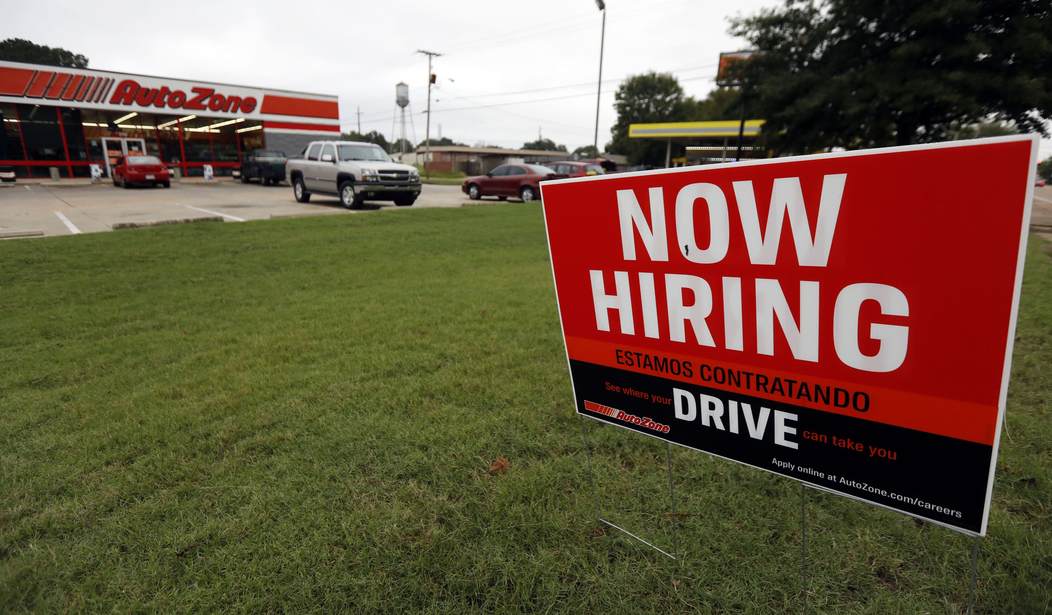The pre-release estimate: 671,000 jobs added in May. The actual number from the Bureau of Labor Statistics: 559,000, well over 100K below the mark. It still shows an improvement over April’s surprisingly small expansion, but with well over 11 million continuing pandemic-relief claims still getting paid, it’s not exactly impressive:
Total nonfarm payroll employment rose by 559,000 in May, and the unemployment rate declined by 0.3 percentage point to 5.8 percent, the U.S. Bureau of Labor Statistics reported today. Notable job gains occurred in leisure and hospitality, in public and private education, and in health care and social assistance. …
In May, the unemployment rate declined by 0.3 percentage point to 5.8 percent, and the number of unemployed persons fell by 496,000 to 9.3 million. These measures are down considerably from their recent highs in April 2020 but remain well above their levels prior to the coronavirus (COVID-19) pandemic (3.5 percent and 5.7 million, respectively, in February 2020). …
Among the unemployed, the number of persons on temporary layoff declined by 291,000 to 1.8 million in May. This measure is down considerably from the recent high of 18.0 million in April 2020 but is 1.1 million higher than in February 2020. The number of permanent job losers decreased by 295,000 to 3.2 million in May but is 1.9 million higher than in February 2020. (See table A-11.)
The ADP report yesterday got the trend right, if not the scope. Hiring did pick up in May, but not nearly as much as expected, and far shorter than what it should have been considering the number of job openings. Millions of jobs are going unfilled, while labor force participation rates are barley recovering at all:
In May, the number of persons jobless less than 5 weeks declined by 391,000 to 2.0 million. The number of long-term unemployed (those jobless for 27 weeks or more) declined by 431,000 to 3.8 million in May but is 2.6 million higher than in February 2020. These long-term unemployed accounted for 40.9 percent of the total unemployed in May. (See table A-12.)
The labor force participation rate was little changed at 61.6 percent in May and has remained within a narrow range of 61.4 percent to 61.7 percent since June 2020. The participation rate is 1.7 percentage points lower than in February 2020. The employment-population ratio, at 58.0 percent, was also little changed in May but is up by 0.6 percentage point since December 2020. However, this measure is 3.1 percentage points below its February 2020 level.
This highlights the problem with the job market. The jobs are coming back, but the workers aren’t. As of May 15, more than 11 million continuing claims pandemic-relief unemployment are being paid, which maintains a labor overhang that doesn’t show up in the U-3 unemployment measurement. The U-6 measurement shows 10.2% unemployment, but even that only accounts for the “marginally attached” to the workforce, not those entirely shelved.
Ken Buck hit the nail on the head:
Joe Biden’s economy misses again. This is what happens when you disincentivize work. https://t.co/QZHViOY3xb
— Rep. Ken Buck (@RepKenBuck) June 4, 2021
Fifteen months after the first outbreak of COVID-19, we are still more than seven million jobs short of where we started. In terms of population growth, we are likely more than nine million jobs short of where we otherwise would be. We need seven-figure monthly jobs reports to catch up, especially when we are almost fully reopened and businesses need labor more than ever. Incentivizing people to stay sidelined is holding back a much broader recovery, and for no good reason other than legislative inertia and political posturing.
And it’s not like the jobs don’t exist:
There were 8.1 million job openings in the U.S. at the end of March
In May, the number of unemployed people who don't have a job but want one was: 6.6 million.— Daniel Gross (@grossdm) June 4, 2021
The quickest way to solve that problem is to remove the disincentives to taking work. Government has quit breaking public commerce; it’s time for government to stop fixing what is no longer broke.
Update: Here’s the data on the labor force participation rate in graphics:

This was at 63.6% in February 2020, and hasn’t been above 61.7% since then — a level we hit in August 2020 and in April 2021 as high-water marks.







Join the conversation as a VIP Member